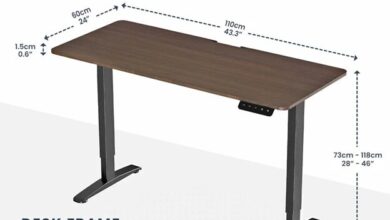Aesthetic Harmony: Balancing Tradition and Modernity in Dubai’s Landscaping Designs

Aesthetic Harmony: Balancing Tradition and Modernity in Dubai’s Landscaping Designs
Introduction: Dubai, a city known for its remarkable blend of tradition and modernity, showcases a unique aesthetic that celebrates its rich cultural heritage while embracing cutting-edge innovation. Nowhere is this dynamic interplay more evident than in Dubai’s landscaping designs, where traditional elements harmoniously coexist with contemporary concepts to create outdoor spaces that captivate the imagination and reflect the city’s multifaceted identity. In this article, we delve into the art of balancing tradition and modernity in Dubai’s landscaping designs, exploring how the city’s landscapes serve as a testament to its diverse cultural influences and forward-thinking vision. For more information check out landscaping companies in dubai
- Traditional Design Principles: At the heart of Dubai’s landscaping ethos lie traditional design principles rooted in the region’s rich cultural heritage and Islamic traditions. Drawing inspiration from centuries-old practices, traditional landscapes in Dubai feature elements such as geometric patterns, water features, and lush greenery that reflect the principles of balance, harmony, and spirituality. Traditional Arabic courtyard gardens, with their shaded walkways, fragrant gardens, and tranquil water features, provide a sanctuary of serenity amidst the bustling urban environment, inviting visitors to pause, reflect, and reconnect with nature.
- Modern Architectural Landmarks: Dubai’s modern architectural landmarks serve as the backdrop for innovative landscaping designs that seamlessly integrate tradition with contemporary aesthetics. Iconic structures such as the Burj Khalifa, Dubai Marina, and The Palm Jumeirah inspire landscape architects to create outdoor spaces that complement the architectural grandeur of the city’s skyline. From rooftop gardens and urban parks to waterfront promenades and green corridors, modern landscaping designs accentuate the sleek lines, bold shapes, and futuristic elements of Dubai’s architectural marvels, creating a cohesive visual narrative that celebrates the city’s modernity.
- Cultural Symbolism and Iconography: Cultural symbolism and iconography play a significant role in Dubai’s landscaping designs, providing a narrative thread that connects past, present, and future. Symbolic elements such as date palm trees, falaj water channels, and Arabian motifs evoke the spirit of the desert landscape and pay homage to the region’s nomadic heritage. Meanwhile, contemporary sculptures, public art installations, and architectural landmarks serve as symbols of Dubai’s cosmopolitan identity and global aspirations, enriching the cultural landscape with layers of meaning and significance.
- Sustainable Innovation and Environmental Stewardship: Innovative landscaping practices in Dubai prioritize sustainability and environmental stewardship, blending traditional wisdom with modern technology to create eco-friendly and resilient outdoor environments. Native plantings, xeriscaping techniques, and smart irrigation systems minimize water usage and promote biodiversity in the desert landscape, while green building materials and renewable energy sources reduce carbon footprint and mitigate environmental impact. By embracing sustainable innovation, Dubai’s landscaping designs exemplify a harmonious balance between tradition and modernity, ensuring that the city’s landscapes remain vibrant, functional, and environmentally responsible for generations to come.
- Community Engagement and Cultural Exchange: Community engagement and cultural exchange are integral to Dubai’s approach to landscaping, fostering a sense of ownership, pride, and inclusivity among residents and visitors alike. Public participation in landscaping initiatives, community gardening programs, and cultural festivals celebrates Dubai’s multicultural identity and promotes cross-cultural dialogue and understanding. By engaging with diverse communities and embracing cultural diversity, Dubai’s landscaping designs serve as a catalyst for social cohesion, mutual respect, and cultural exchange, enriching the urban experience and fostering a sense of belonging in the city’s vibrant tapestry of cultures.
Conclusion: Dubai’s landscaping designs epitomize the delicate balance between tradition and modernity, weaving together elements of the past and present to create outdoor spaces that are both timeless and contemporary. As the city continues to evolve and grow, its landscapes will remain a reflection of Dubai’s unique identity, celebrating its rich cultural heritage, embracing innovation, and inspiring awe and wonder in all who experience its aesthetic harmony. In Dubai’s landscapes, tradition and modernity converge to create a symphony of beauty, diversity, and cultural richness that defines the city’s urban landscape and captivates the imagination of the world.



